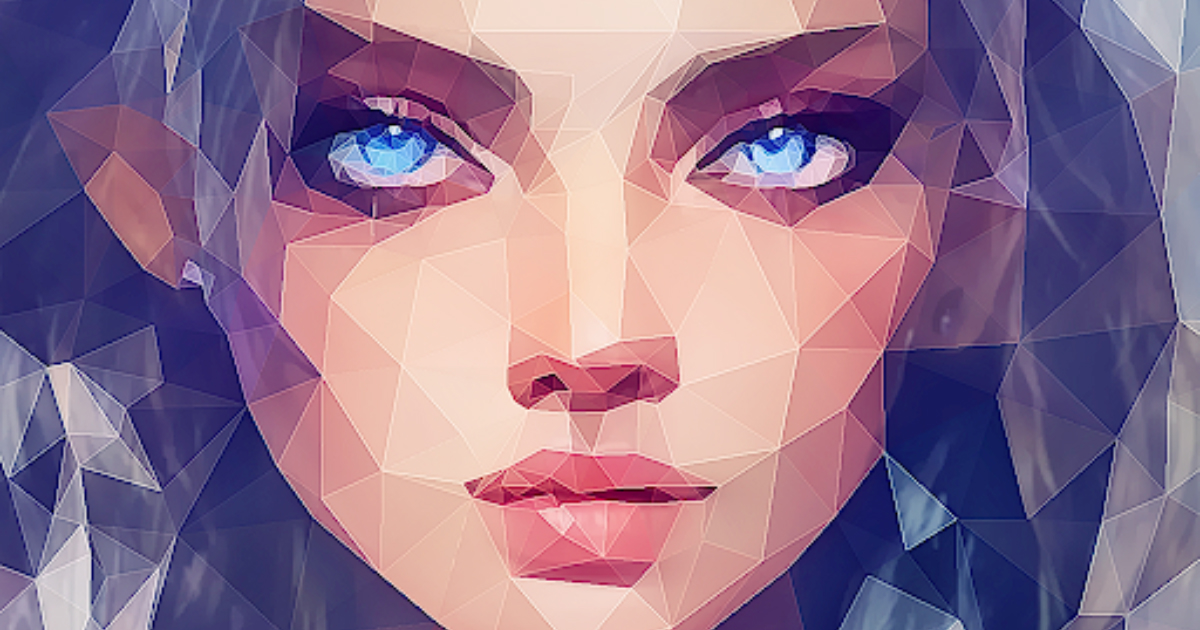Beginners who tend to learn 3D modeling can first get access to low-poly models thanks to their simplicity. However, the question “How To Make Low – Poly Models” is still baffling, which makes many people puzzled. This article will show you the basic guide for beginners to create these interesting models.
What Is A Low-Poly 3D Model?
A low-Poly 3D Model (also called a low-polygon model or LPM) is a model that has a relatively small number of polygons in 3D computer graphics. Polygons are described as geometrical shapes which create a polygon mesh and are in charge of constructing details in the 3D Model ( typically triangles or quadrilaterals).
The mesh is the collection of all vertices, surfaces, and edges that comprise a 3D object and low-poly designs with a few polygons in their meshes, resulting in low-poly models.

Especially, 3D objects can be used in apps and on all digital platforms, like the video game industry. Therefore, 3D modelers will use retopology to improve the geometry. The small number of polygons in Low-poly models makes it lighter to render and use in-game.
Moreover, low poly is also a popular method in 3D printing since the traditional forms and lack of fine detail make items easy to produce. This design style’s simplicity will make it effortless for many beginners to learn 3D modeling and printing from scratch.
What Are The Benefits Of Creating A Low-Poly Model?
Despite its basic appearance, the low-poly 3D model needs great creativity, knowledge, and experience since you must use most of your limited resources to build sophisticated compositions. Let’s explore the reasons for creating a low-poly model:
High Performance
Nowadays, data is regarded as one of the most important factors contributing to the development of each industry. Let’s take the rapid growth of AR/VR as an example. By integrating a huge amount of data, AR/VR has the ability to increase the user experience in real life.

Because using high-poly models on a high frame rate currently is impossible, it’s a better choice to go for low-poly modeling that can deal with data minimization without compromising the ultimate product.
Flexibility
One of the outstanding benefits of a low-poly 3D model is its ability to be applied to various mediums, such as famous animal sculptures, illustrations, and video games,… This characteristic will let you experience textures, shapes, and colors.

Moreover, due to the multiple faces of polygons, players can immerse themself in the interesting effects of light and textures.
Multi-target Use With Low-Polygon 3D Models
Models created can be applied in any 3D program, but with low-poly models, you can use them better in real-time applications. Therefore, users can work on many projects with challenging tasks to meet the high demand for low-poly experts.

Low-poly models contain fewer polygons and have simpler geometry. Because of their great quality, these 3D objects can be applied in apps or all digital platforms. Therefore, 3D modelers will employ retopology to improve their models.
3D Modeling Skills Enhancement
Even if you already have excellent high-poly modeling skills, honing your low-poly modeling will improve your abilities and require you to think outside the box.
When weighing meshes with the lowest attainable resolution versus the greatest visually feasible output, there will be many challenges happening to help you develop in the 3D modeling industry.
How to Make Low-Poly Models? (5 Basic Steps)
After clarifying some outstanding benefits of low-poly models, many people may wonder how to create these interesting objects.Below are 4 steps for you to click through to get the hang of 3D low-polygon models:
Step 1: Define Your Idea
Before creating low-poly models, beginners need to decide what ideas they want. A reference image may be wise if you’ve never modeled an animal or a complex shape before.

Working perpendicular to a plane is one of the ideal targets when you’re drawing the first layer. Regarding first-layer drawing, It includes getting the original 2D shape correct, which will then be converted to 3D.
For instance, if you’re creating an animal, you’ll want to work perpendicular to the vertical plane. However, if you’re making a sender shape, such as a palm tree, you should work perpendicular to the horizontal plane.
Step 2: Prepare Necessary Items For Creating Low-Poly 3D Models

To be successful in creating low-poly 3D models, users need to prepare all these important materials carefully:
- A PC or Laptop
- 3D modeling software like Blender, Meshmixer,…
- Profit
Once you get all the necessary items mentioned above, let’s go to the next step!
Step 3: Drawing First Layer
Begin with a plane, and move around the vertices of this initial plane to get an approximate 2D shape of your chosen Model. Edit mode with your Model is recommended for beginners to set to wireframe and selection type to the vertex.

Once users get their first shape ready, they need to select one of the edges from the edge select tool to extrude another shape from that edge.
Move the vertices of that shape around as well until they contribute to the desired final shape. Next, continue and repeat that process until having the 2D form of the Model they want.
Step 4: Make It 3D
After completing the base of your 2D drawing, extrude it to the thickness you want. What you’re modeling depends on the distance between the extrusions. A palm tree, for example, must be far taller than an animal wild. First-layer drawing is so important when it comes to creating low-polygon 3D modeling

Another tip for beginners is that extruding a model will be easier if you use a solid view instead of a wireframe and have face selection enabled.
Step 5: Add More Details

You already have a three-dimensional model. However, it will resemble a block with little detail or similarity to the actual object. The following step is to experiment with that 3D model until it appears good and detailed.
Adding detail from textures to a low-poly model. For instance, to make an oak tree, start with a plane for the base, extrude it up to a certain point, and then scale it slightly. This won’t make it become a rectangular prism.
You can even flip it. Extrude again from the new plane generated at the top of the trunk, and so on, until the box has reached its final shape.
You may also be interested in: how to make a 3d model?
4. FAQs
- How Do You Texture Low-Poly Models?
A 3D modeling artist will add texture to a model by hand-painting textures or using real photographs to create a detailed or realistic appearance. The 3D animation workflow includes stages such as unwrapping, texture painting, shading, and rendering.
Throughout the 3D animation rendering stage, textured models will be chosen.
- Is Low-Poly Easy?
No, but it requires the persistence of beginners to get access to 3D modeling for the first time. The reason is every single vertex must be examined carefully, hence, making low-poly models is challenging.
You must first understand the underlying texturing and rigging techniques to achieve the desired appearance and animation outcomes.
- How Do You Make Low-Poly Models Look Real?
You can make Low-Poly 3D Models look real by rendering a single geometry in great detail. As texture, use flat color but a complicated shader with specularity, refractions, and so forth. We then use cutting-edge lighting technologies to produce simple designs.
Even though we work on simple forms, the complexity will be likely to increase. We’re combining low and high-quality to create a pleasing combination of the two.
Conclusion
In conclusion, “How To Make Low-Poly Models” is always a confusing question for many beginners when first learning 3D Modeling. However, because of their simplicity as well as outstanding benefits, 3D low-polygon models are not as difficult as they expected.
Hopefully, the article has clarified for beginners the most basic steps to get the hang of creating low-poly objects. Check out 3D Product Modeling Services of Visulise for higher quality!

Related Posts: